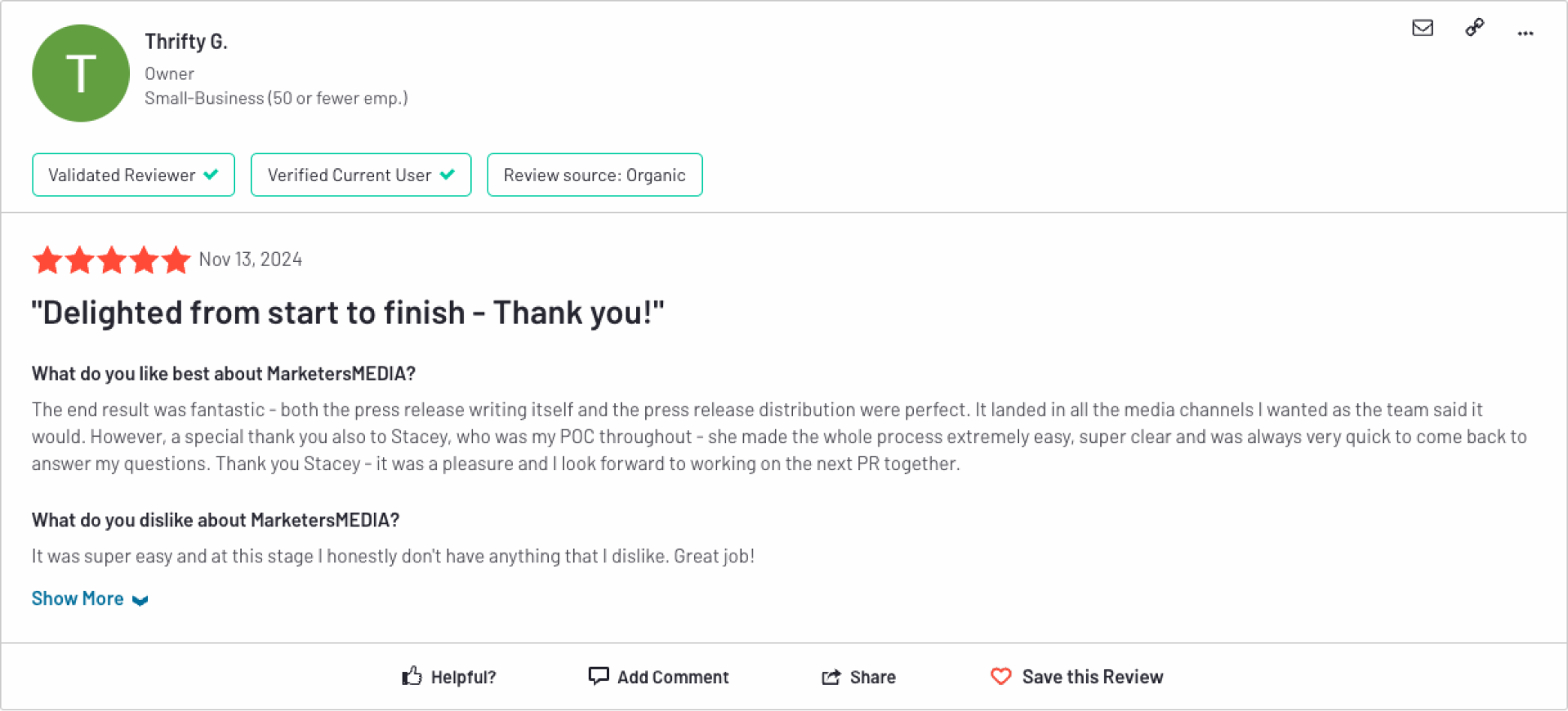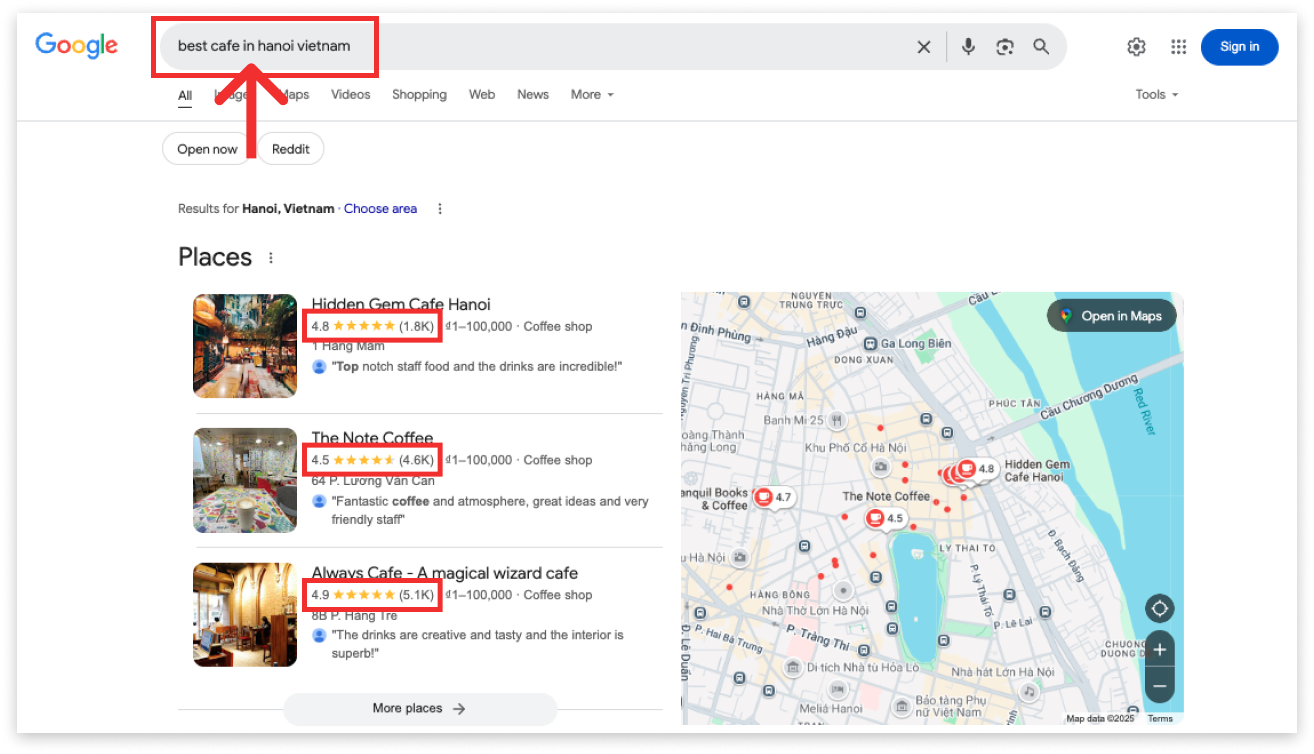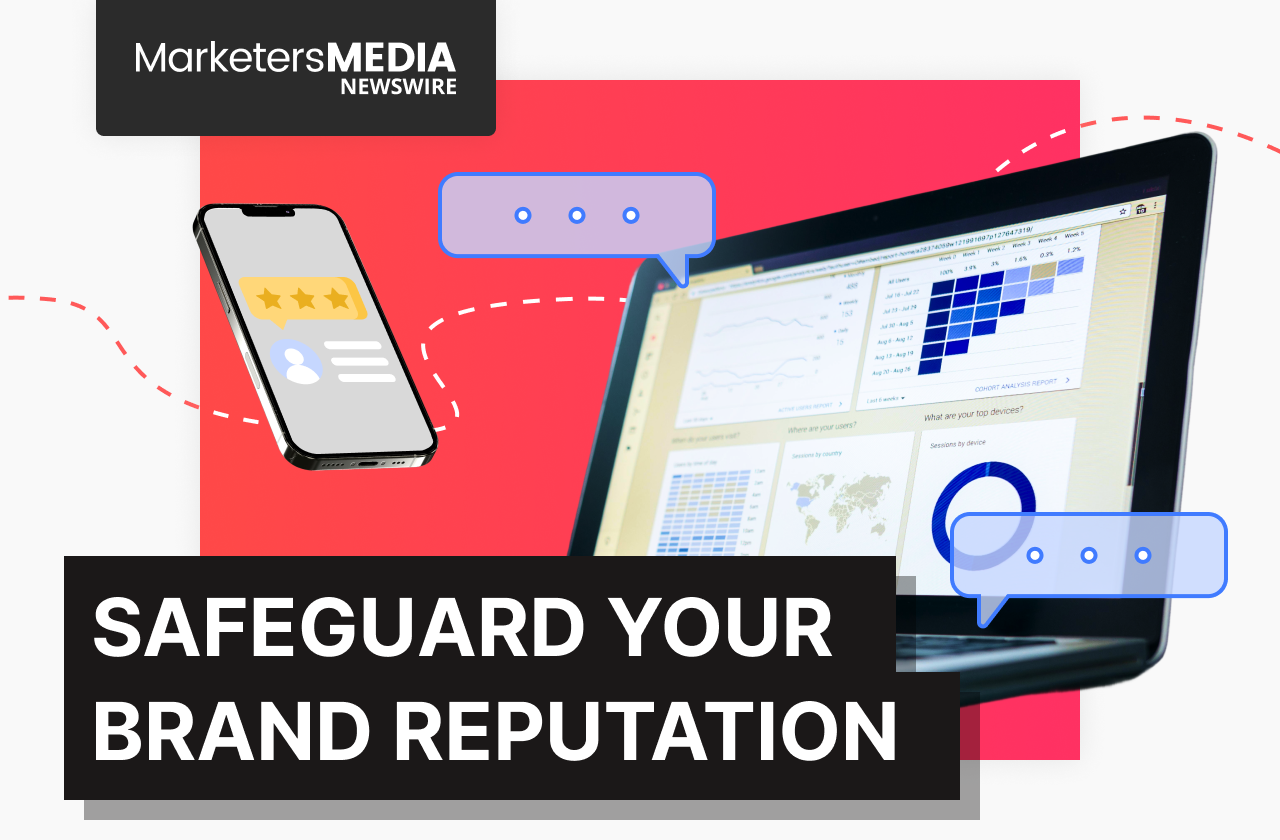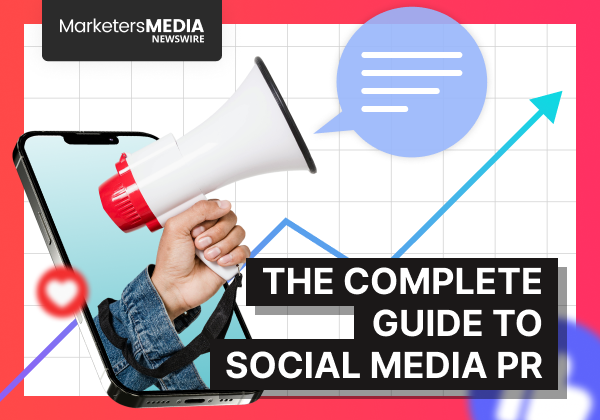Your brand's reputation can take a hit faster than you can hit "send" on a social media post. One negative review, a poorly timed comment, or a customer service mishap can quickly spiral online.
And it’s not just small businesses feeling the impact—91% of consumers say local branch reviews influence their perceptions of big brands, according to BrightLocal.
While we can't control everything people say, we can strategically influence their perception through smart reputation management. This approach helps businesses protect, shape, and strengthen their public image in an increasingly connected world.
What is Reputation Management?
Reputation management is the practice of shaping how others perceive your brand, business, or personal image. It involves monitoring public feedback, addressing concerns, and maintaining a consistent presence across platforms to build trust and credibility.
This process combines proactive efforts—such as delivering consistent messaging—with reactive measures like handling PR crises effectively. Together, these efforts create a reputation that fosters trust and confidence.
Importance of Reputation Management
Trust and Credibility
Building trust and credibility is key to maintaining strong relationships with your audience. A positive reputation gives customers, stakeholders, and the public confidence in your business. When people see a brand they trust, they’re more likely to stay loyal and engaged.
According to Dixa, 93% of consumers will read online reviews before making a purchase. And ReviewTrackers reports that 94% of online consumers say a negative online review has convinced them to avoid a business.

These stats show just how important online reviews are for reputation management and consumer trust. Brands with good reviews naturally earn trust and credibility, which helps build customer loyalty.
Competitive Advantage
A solid reputation helps you stand out in a crowded marketplace. It becomes a deciding factor for customers choosing between you and your competitors.
Say a customer is weighing their options: your brand, supported by glowing reviews and consistent customer satisfaction, naturally stands out, while competitors with weaker reputations struggle to gain the same trust.
A strong reputation positions your business as the preferred choice for customers and investors, giving you an advantage in a competitive market.
Boosting Brand Visibility
A strong reputation not only builds trust but also enhances your brand’s visibility across multiple channels. Positive reviews, testimonials, and user-generated content naturally improve your presence on search engines and social media platforms.
Search engines prioritize businesses with higher ratings and more positive feedback, making it easier for potential customers to find you. For example, a consistent stream of positive reviews can improve your local SEO rankings, ensuring your business appears in search results when people look for services in your area.

Visibility doesn’t stop at search engines—customers who have a great experience are more likely to share it on social media or recommend your brand in their circles. This organic reach amplifies your brand’s message and helps you attract more customers without additional marketing spend.
Driving Revenue Growth
Your reputation plays a big role in how much revenue your business brings in. Think about it—when customers trust a brand, they’re more likely to make a purchase and even recommend it to others.
According to FindStack, businesses with 200 or more reviews generate twice as much revenue as those with fewer reviews. This highlights how a strong review collection strategy contributes to financial growth.
When people see great feedback from others, it reassures them that they’re making the right choice. And loyal customers? They’re likely to stick around and spend more over time. Add in the power of word-of-mouth, and you’ve got a formula for steady growth.
Long-Term Growth
Reputation management ensures your business stays resilient and adaptable over time. A strong reputation not only attracts loyal customers but also positions your business as a reliable partner for investors, suppliers, and other stakeholders. These relationships lay the groundwork for future opportunities, such as market expansions or collaborations.
Beyond short-term wins, a positive reputation supports sustainable growth. It provides the stability needed to navigate market changes, build new partnerships, and expand into untapped markets. Businesses with a strong reputation aren’t just surviving—they’re thriving in the long run.
In short, a well-maintained reputation is an asset that drives both immediate results and lasting success.
Handling Crisis
A strong reputation can be your best defense during tough times. Mistakes, negative reviews, or misinformation can quickly spiral online, but businesses with a solid reputation are better equipped to handle the fallout.
When people already trust your brand, they’re more likely to give you the benefit of the doubt during a crisis. Positive relationships and goodwill built over time can soften the impact of negative events, giving your business the breathing room to respond effectively.
Draw in Top Talent
A strong reputation doesn’t just bring in customers—it also attracts the best employees. Talented professionals want to work for companies they respect and trust.
In fact, according to MRINetwork, 69% of candidates would reject a job offer from a company with a bad reputation, even if they were unemployed. Similarly, Forbes reports that 92% of people would consider changing jobs if offered a role in a company with an excellent reputation. This shows just how much top talent values working for employers with strong reputations.
Strategies for Effective Reputation Management
Reputation management isn’t something you can do once and forget about—it’s an ongoing process that keeps your business in a positive light. From addressing feedback to planning for unexpected challenges, these strategies can help you stay on top of things while building trust with your audience.
Monitor and Assess Public Reputation
The first step is knowing what people are saying about your business. Regularly review how your brand appears in:
- Search results: Look for any outdated or inaccurate information.
- Review sites: Platforms like Google, Yelp, or industry-specific review sites can reveal customer sentiment.
- Social media mentions: Keep an eye on posts, tags, and comments where your business is mentioned.
To stay on top of things, tools like Google Alerts or Hootsuite can help you keep track of mentions of your business, products, or even competitors in real time. This way, you’ll catch issues early—before they grow into bigger problems.
Respond to Customer Feedback and Reviews
How you handle feedback—good or bad—can make or break your reputation. Positive reviews? Acknowledge them to show your appreciation. Negative reviews? Address them quickly and professionally to show you care about resolving concerns.
Respond promptly and professionally to all reviews. A thoughtful response to a complaint can turn a frustrated customer into a loyal one. Customers notice when a business listens, and it’s a great way to show that you value their input.
Build a Positive Online Presence
Taking control of your brand’s story online is key to reputation management. Sharing positive reviews, customer success stories, and testimonials helps create a positive image and builds confidence in your brand.
Encourage satisfied customers to leave reviews and share their experiences. The more positive feedback you have, the easier it is for potential customers to trust your business.
Keep Things Consistent Across Platforms
When people search for your brand, they should find consistent information everywhere. Your website, social media accounts, and review profiles should all align with your brand’s tone and values.
Keep your contact details, branding, and messaging consistent. This shows professionalism and makes your business easier to trust and recognize.
Have a Crisis Management Plan
No brand is immune to challenges, but a well-prepared crisis management plan can make all the difference. Here’s how you can stay ready:
- Identify potential risks: Think about common issues your business might face, like negative reviews or misinformation spreading online.
- Assign a spokesperson: Designate someone to handle public communication during a crisis to ensure clear and consistent messaging.
- Create response templates: Draft pre-approved messages for common situations, like addressing a negative review or clarifying misinformation.
- Stay informed: Monitor industry trends or news that could affect your business, so you’re ready to act if needed.
Regularly Check How You’re Doing
Reputation management is never “done.” Regularly review how people are talking about your business and look for trends in customer feedback. Are there recurring complaints? Are there areas where you could do better?
Metrics to track:
- Customer sentiment (how people feel about your brand).
- Feedback trends (recurring issues or praise).
- Engagement levels (how people interact with your content or responses).
If something isn’t hitting the mark, adjust and keep improving.
Be Transparent and Authentic
Honesty goes a long way in building trust. Customers appreciate brands that take accountability for their mistakes and communicate openly.
When something goes wrong, own it and show how you’re working to make it right. Sharing behind-the-scenes updates or personal stories also helps humanize your brand and build stronger connections with your audience.
For example, if a delivery is delayed, being upfront about the issue and how you’re fixing it shows customers that you value their time and experience.
Examples of Good Reputation Management
Many companies have successfully managed their reputation, turning challenges into opportunities and building long-lasting trust with their audience. Here are some inspiring examples that highlight best practices in reputation management:
Starbucks and the Philadelphia Incident
In 2018, two Black men were arrested in a Philadelphia Starbucks while simply waiting for a friend. The incident sparked nationwide outrage, putting Starbucks in the spotlight for all the wrong reasons. However, the way Starbucks handled the situation became a textbook example of thoughtful reputation management.
Starbucks CEO Kevin Johnson immediately issued a heartfelt apology, taking full accountability for what had happened. But the company didn’t stop at words—they took action. Starbucks temporarily closed over 8,000 stores across the U.S. to conduct racial bias training for employees. They also updated store policies to ensure everyone felt welcome in their spaces.
This thoughtful and transparent response not only helped rebuild trust but also showed the public that Starbucks was committed to learning and improving from its mistakes.
Domino’s Pizza: Owning Their Mistakes
Back in 2009, Domino’s Pizza faced a harsh reality: customers weren’t happy with their pizza. Complaints about taste, crust texture, and overall quality had become widespread, leading to a major reputational challenge. But instead of ignoring the criticism, Domino’s leaned into it.
They launched a bold ad campaign called “The Pizza Turnaround,” where they owned up to the criticism. They showed real feedback from customers—some of it brutally honest—and committed to improving their recipes. The company made changes to its crust, sauce, and cheese and even invited customers to try the new version.
The transparency and willingness to listen paid off. Domino’s didn’t just recover; they thrived, becoming one of the most successful pizza chains in the world.
Johnson & Johnson: A Crisis Well-Handled
In 1982, Johnson & Johnson faced a crisis that could have destroyed their brand. Several people had died after taking cyanide-laced Tylenol capsules, creating widespread fear and mistrust.
The company acted quickly and responsibly. They immediately recalled 31 million bottles of Tylenol from store shelves, prioritizing customer safety above all else. Johnson & Johnson also worked closely with authorities and media outlets to keep the public informed and introduced tamper-proof packaging to restore trust in their products.
This swift and transparent response didn’t just save Johnson & Johnson’s reputation—it set the gold standard for how businesses should respond to a crisis. By putting customer safety first, they showed that doing the right thing is always the best approach.
Buffer and the Security Breach
In 2013, social media scheduling platform Buffer faced every tech company’s nightmare: a hacking incident that compromised their users’ accounts. Instead of going silent or downplaying the situation, Buffer took immediate action—and turned a crisis into an opportunity to show how much they valued their users.
Buffer’s CEO emailed all users as soon as the breach was discovered, explaining what had happened in clear and simple terms. They posted regular updates on their blog and social media, sharing what they were doing to fix the issue. Along with that, Buffer offered guidance to users on how to secure their accounts.
By being open, transparent, and proactive, Buffer turned a potentially damaging event into a moment of trust-building with their customers.
LEGO’s Thoughtful Customer Service
Sometimes, the smallest gestures can have the biggest impact on a brand’s reputation. LEGO, known for its creativity and family-friendly image, has become a leader in thoughtful customer service.
One memorable example involved a young boy named Luka who lost his favorite LEGO figure. Luka wrote to LEGO asking for help, and the company’s response wasn’t just a replacement—it came with a personalized letter that showed empathy and humor.
These small yet meaningful interactions have cemented LEGO’s reputation as a brand that genuinely cares about its customers, creating lifelong loyalty among families.
Examples of Bad Reputation Management
Managing a reputation isn’t easy, and when companies fail to act responsibly or respond thoughtfully, the results can be disastrous. These examples show how poor decisions or inadequate responses can harm a brand’s image—and what you can learn from their mistakes.
Pepsi’s Tone-Deaf Protest Ad
Pepsi faced backlash in 2017 for an ad featuring Kendall Jenner that trivialized social justice movements. The commercial, which showed Jenner handing a Pepsi to a police officer to resolve tensions, was called out for being tone-deaf and dismissive of serious issues.
Although Pepsi quickly pulled the ad and apologized, the damage was done. Critics accused the company of exploiting social justice for profit, leaving a lasting stain on its reputation.
United Airlines and the Passenger Dragging Incident
In 2017, United Airlines became the center of a global backlash after a passenger was forcibly removed from an overbooked flight. The video, showing security officers dragging a bloodied passenger off the plane, went viral within hours.
Rather than issuing an immediate and sincere apology, United Airlines initially defended its actions, referring to the incident as a “re-accommodation.” This response came across as cold and dismissive, intensifying public outrage.
When the company finally apologized, it was seen as insincere and far too late. The damage was done, with United’s handling of the situation becoming a cautionary tale in how not to manage a crisis.
BP and the Deepwater Horizon Oil Spill
BP’s response to the Deepwater Horizon oil spill in 2010 is a classic example of mismanagement. Millions of barrels of oil spilled into the Gulf of Mexico, and the company’s CEO worsened the situation with an infamous remark: “I’d like my life back.”
The comment, paired with BP’s slow and defensive communication, angered the public and environmentalists. Despite spending heavily on PR campaigns, BP’s mishandling of the crisis left a lasting impact on its reputation.
H&M’s Racist Hoodie Controversy
In 2018, H&M sparked controversy with an ad featuring a Black child wearing a hoodie with the phrase “Coolest Monkey in the Jungle.” The ad was called out for being racially insensitive and led to widespread backlash online.
While H&M apologized and pulled the product, many criticized the brand for lacking cultural awareness. The controversy highlighted the importance of careful review processes in marketing.
Uber’s Leadership Scandals
Uber faced a string of scandals in 2017, from workplace harassment allegations to a viral video of then-CEO Travis Kalanick arguing with a driver. The company’s failure to address internal issues early led to widespread criticism of its toxic work culture.
It wasn’t until Kalanick stepped down and new leadership was brought in that Uber began rebuilding its reputation. The slow response highlighted the importance of accountability at the top.
Closing Thoughts
To recap, reputation management shapes how people perceive your business and builds the trust that keeps them coming back. By staying proactive, addressing feedback thoughtfully, and being prepared for unexpected situations, you can build trust and create lasting relationships with your audience.
Take a moment to think about how your business is perceived today. What do customers say in reviews? How does your business appear online? Small improvements—like responding to feedback or maintaining consistent messaging—can make a big difference in building a reputation that lasts.
The effort you invest now will set the foundation for long-term success. Keep listening, adapting, and engaging, and your reputation will become one of your most valuable strengths.
Need help managing your reputation? Learn how a well-structured PR strategy can support your efforts. Check out our guide on building a winning PR team to get started.
Free Press Release Template
Tell us where to send your PDF:








